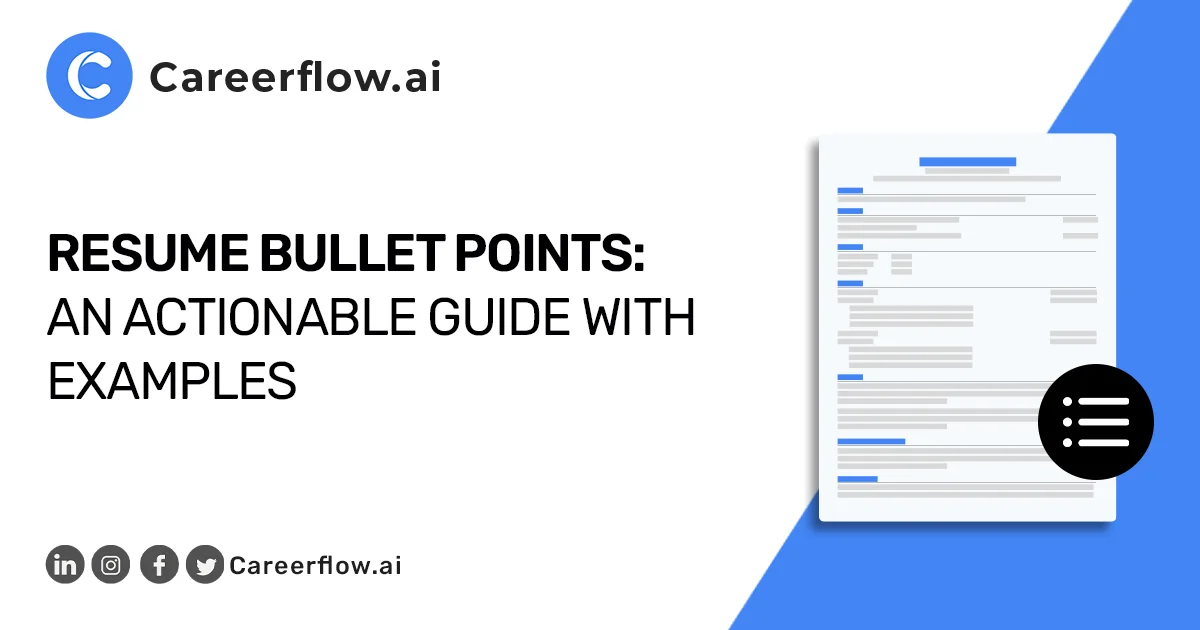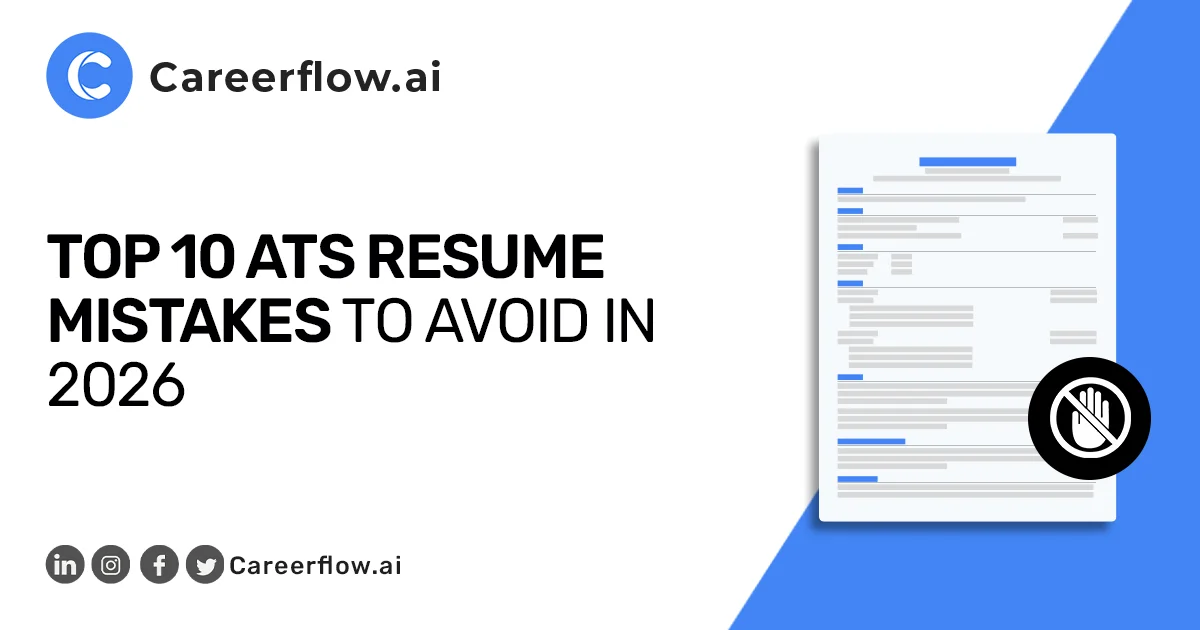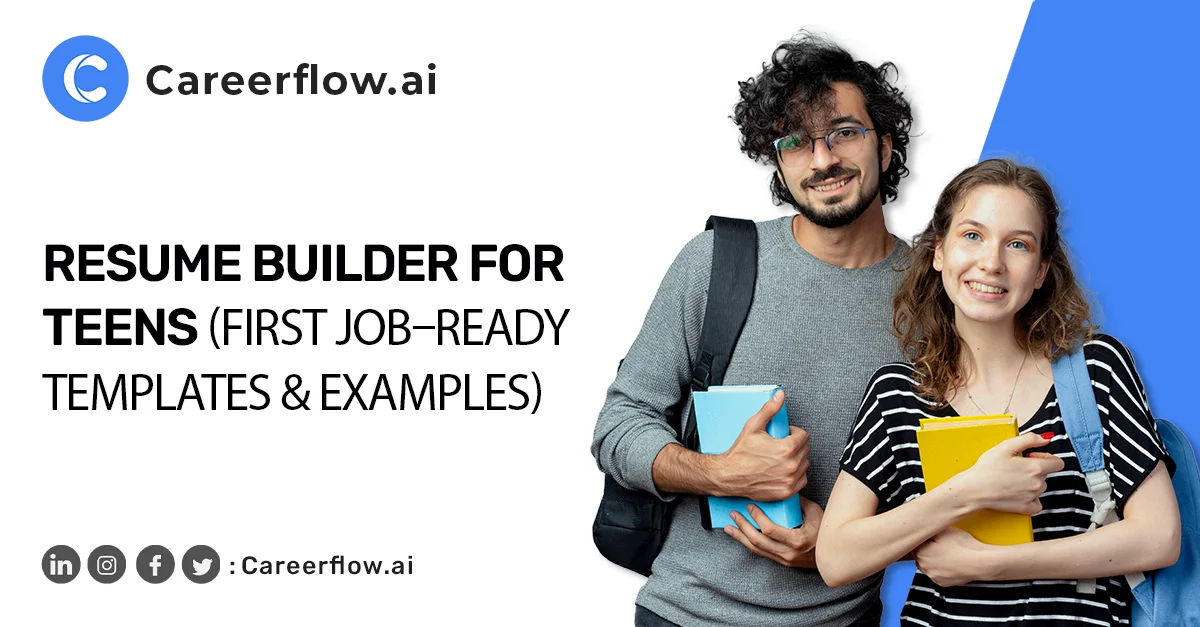Grades can open doors, but a great resume gets you in the room. As a college student, your resume should translate education, projects, internships, campus leadership, and skills into clear, outcome‑focused bullets.
In this guide, you’ll learn exactly what to include, how to structure each section, and the formatting moves that keep your resume one‑page and ATS‑friendly. We’ll also show you how to use our resume builder for college students to turn these tips into a polished PDF in minutes—no design skills required.
Who This Guide Helps
Whether you're targeting internships, co-ops, or research roles—or applying to competitive scholarships or graduate programs—this guide shows you how to turn your education, projects, and skills into a concise, recruiter-ready resume.
It's just as useful if you're in your final year or recently graduated and need an entry-level resume that stands out. Career centers and university advisors can share this with students as a ready-to-use checklist and toolkit.
How Our Resume Builder Works For College Students
Here’s how to turn a blank page into a recruiter‑ready resume—fast. Careerflow guides you through the essentials, prompts you with examples, and keeps everything clean and ATS‑friendly. Follow these five steps to go from raw notes to a polished PDF:
- Pick your goal and template: Choose a college‑focused template aligned to your target: internship, entry‑level role, or grad school. (You can also upload an existing resume to auto‑parse the basics.)
- Fill the guided sections: Follow clear prompts for Education, Experience (internships/part‑time), Projects, Campus Involvement, Skills, Awards/Scholarships, Certifications. Each section includes tips and example bullets so you’re never starting from scratch.
- Turn tasks into results: Convert duties into impact with action verbs and numbers (e.g., “increased engagement 20%”). Built‑in suggestions help you quantify outcomes and mirror job description language without keyword‑stuffing.
- Tailor and reorder for relevance: Duplicate a version per opportunity, then drag sections to the top that matter most (Projects for internships, Experience for jobs, Research for grad programs). Swap skills to match the role.
- Export polished, ATS‑friendly PDFs: Automatic spacing, consistent headings, and link checks keep your resume clean and scannable. Save multiple variants and export with a clear file name (e.g., Firstname_Lastname_College_Resume_2025.pdf). Add each application to your Job Tracker so deadlines and OAs don’t slip.
What To Include On A College Student Resume
When it comes to crafting your first college resume, it is important to know what to include. Prioritize the most important sections and avoid adding irrelevant ones. Personal information and a summary are common in all resumes, regardless of whether you are a college student or an experienced professional; however, for a college student’s resume, it is especially important to prioritize the sections listed below.
1. Education
For college students, your Education section is the most important part of your resume. It acts as the cornerstone of your qualifications, especially if you have limited professional experience. This section is where you showcase your academic achievements and potential.
Here's how to make it stand out:
- List all relevant academic details: Include your school, degree, and GPA. If your GPA is strong (typically 3.5 or higher), be sure to highlight it.
- Add relevant coursework: List any classes that directly relate to the job you're applying for. This shows employers you have a foundational understanding of the field.
- Include honors and awards: Mention any academic honors, scholarships, or dean's list recognition. This proves your dedication and work ethic.
- Highlight special programs: Did you study abroad or participate in a unique academic program? Include it to show a diverse background and a willingness to learn new things.
✅ Example
Bachelor of Science in Computer Science, Boston University (GPA: 3.8)
Jun '21 — Jun '25
Boston, United States
Achieved Dean's List honors consecutively in 2024 and 2025, recognizing outstanding academic performance in the Computer Science program, demonstrating a consistent level of excellence.
2. Internships & Part‑Time Jobs
Use this section to turn hands-on experience into results. Include internships and part-time roles from college that align with your target role. If something isn’t relevant, summarize briefly or leave it out. You can also add volunteer work and extracurricular leadership when they demonstrate transferable skills. Write concise bullet points that start with strong action verbs and, where possible, quantify impact (e.g., “increased engagement 20%”).
✅ Example
Marketing Intern, ABC Digital, Remote
January 2025 - May 2025
- Managed social media content creation and scheduling, increasing Instagram engagement by 20% in one quarter.
- Wrote and edited blog posts, driving an average of 500 new visitors per month to the company website.
- Collaborated with the design team to create email marketing campaigns that improved click-through rates by 15%.
3. Campus Involvement
Leadership roles in any college or external clubs, or student organizations demonstrate teamwork and leadership skills. Mention any of your roles and how you impacted and contributed to them; these skills attract recruiters and make you stand out from the crowd.
✅ Example
President, Student Marketing Club, Boston University
- Led a team of 15 members to organize three campus-wide events, which attracted over 200 attendees.
4. Projects
Projects are an important aspect when it comes to college resumes. They always portray your problem-solving skills. A good problem-solving project means you have the ability to identify a problem and resolve it. This gives you an edge over other applicants. Under this section, mention your project title, your role in the project, a brief description of the project, its methods, and the results of it.
✅ Example
Personal Finance App, Self-Directed Project
- Developed a full-stack mobile application using Python and React Native to help college students track spending. Gained 100+ beta users in the first month.
5. Skills
When it comes to a college resume, add all the skills you acquired during your college period. Clearly show how you applied them to achieve any results. Include all the technical skills, any additional languages you know, and any soft skills with measurable outcomes.
✅ Example
- Technical Skills: Python, Java, SQL, Microsoft Excel
- Languages: English (Native), Spanish (Conversational)
6. Awards & Scholarships
This section highlights your accomplishments and shows recognition from others. Include any merit-based awards, academic grants, or leadership recognitions.
✅ Example
- Dean's Scholarship—Awarded for academic excellence (2023)
- First Place, University-wide Case Study Competition (2024)
7. Optional Sections
If you have space and it's relevant to the job, consider adding these sections. Include certifications, relevant personal projects, links to a portfolio, or any relevant publications.
✅ Example
Certifications: Google Analytics Individual Qualification
Portfolio: www.yourportfolio.com
Formatting Best Practices
When crafting a resume, the formatting is just as important as any skills and achievements. Applicant Tracking Systems (ATS) are used by many employers to screen resumes, so proper formatting is essential for your resume to be successfully read by these systems. Follow these few practices to ensure your resume is well-formatted.
- Always keep your resume to one page; two-page resumes are acceptable only for candidates with extensive and highly relevant experience.
- Use a professional, ATS-friendly design, such as the one available with Careerflow's AI resume builder, and avoid using excessive graphics or non-standard fonts.
- Make sure to export your resume as a PDF with a clear professional file name such as "FirstName_LastName_College_Resume_2025.pdf."
- Lastly, remember to include any links to portfolios, LinkedIn profiles, or any published work.
Tip: If you have limited work history, start with our resume with no experience guide to prioritize projects, coursework, and skills.
How To Tailor Your Resume For Any Goal
A successful resume isn't one-size-fits-all. It needs to be a targeted document that speaks directly to the reader's needs, whether that's an internship coordinator, a recruiter, or a scholarship committee.
For Internships: Showcase your potential by focusing on hands-on projects, relevant coursework, and skills. Show how your academic learning can be applied in a professional setting.
For Entry-Level Jobs: Emphasize your practical experience. Highlight internships, part-time roles, and the specific technical tools or software you have used.
For Graduate Programs: Your academic record is key. Prioritize research experience, academic excellence (GPA, honors), and leadership roles that demonstrate your readiness for advanced studies.
For Scholarships: Align your resume with the scholarship's mission. Highlight awards, community service, and extracurricular activities that reflect the values of the organization.
Additional Resume Tips For Students
✅ Use the STAR Method: Transform your bullet points from simple duties into powerful stories. Use the Situation, Task, Action, and Result format to show the impact of your work.
✅ Keep it ATS-Friendly: Use clear, standard section headings (e.g., "Education," "Skills," "Experience"). This ensures that automated applicant tracking systems (ATS) can easily parse your resume.
✅ Use Keywords: Scan the job, internship, or program description for keywords and incorporate them naturally into your resume. This will help your application stand out in keyword-based searches.
✅ Update Regularly: Get into the habit of updating your resume every semester. This makes it easy to add new achievements as they happen.
Common Mistakes to Avoid
❌ Listing duties instead of accomplishments: A resume isn't a job description. Focus on what you achieved, not just what you did.
❌ Forgetting to quantify: Whenever possible, use numbers to show the measurable impact of your work.
❌ Ignoring the design: Avoid complex fonts, graphics, or layouts that make it difficult for an ATS or a recruiter to read.
❌ Not tailoring your resume: The biggest mistake you can make is using a generic resume for every application. Always tailor your document for each specific role.


.webp)






